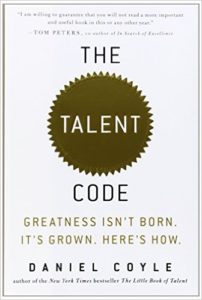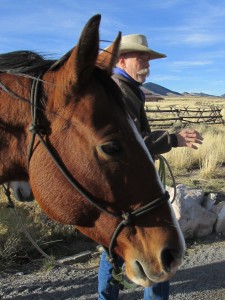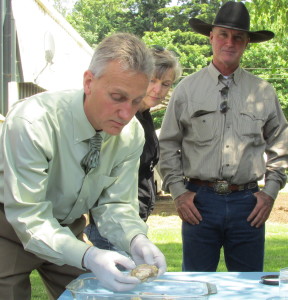In The Talent Code, Daniel Coyle discusses the merits of soccer hotbeds in Brazil and training methods of famous pianists. So, what does all that have to do with horsemanship?
Everything.
 As Coyle explains, it all comes down to one microscopic detail, shared by horses and humans alike: the development of myelin.
As Coyle explains, it all comes down to one microscopic detail, shared by horses and humans alike: the development of myelin.
He writes:
- Every movement, thought, or feeling is a precisely timed electric signal traveling through a chain of neurons – a circuit of nerve fibers.
- Myelin is the insulation that wraps these nerve fibers and increases signal strength, speed, and accuracy.
- The more we fire a particular circuit, the more myelin optimizes that circuit, and the stronger, faster, and more fluent our movements and thoughts become.
Coyle traveled the world to research what’s called Deep Practice.
Deep Practice is built on a paradox:
Struggling in certain targeted ways – operating at the edges of your ability, where you make mistakes – makes you smarter.
Experiences where you’re forced to slow down, make errors, and correct them…end up making you swift and graceful.
 Randy Rieman’s clinic last year confirms this approach. He extolled the virtues of slowing down and getting the fundamentals sound. These basics become habits and movements to build and rely on. Time and again, he had students return to simpler forms in order to work on smoothness.
Randy Rieman’s clinic last year confirms this approach. He extolled the virtues of slowing down and getting the fundamentals sound. These basics become habits and movements to build and rely on. Time and again, he had students return to simpler forms in order to work on smoothness.
“When the horses are in a hurry, their minds are uncomfortable because their bodies are uncomfortable. When we break things down and move more slowly through an exercise, we work on removing the anxiety and extending their range of motion. They aren’t livening up and getting tight. They are livening up and getting loose,” said Rieman, who studied at length with Tom and Bill Dorrance. “Tom Dorrance used to say, ‘Do less more often.’”
Writes Coyle in The Talent Code:
“…[T]he best way to build a good circuit is to fire it, attend to mistakes, then fire it again, over and over. Struggle is not an option: it’s a biological requirement.”
Why does slowing down work so well?
“ …Going slow allows you to attend more closely to errors, creating a higher degree of precision with each firing – and when it comes to growing myelin, precision is everything. As football
coach Tom Martinez likes to say, “It’s not how fast you can do it. It’s how slow you can do it correctly.” Second, going slow helps the practice to develop something even more important: a working perception of the skill’s internal blueprints – the shape and rhythm of the interlocking skill circuits.”
At a recent Evidence-Based Horsemanship Seminar, Dr. Steve Peters used a passage from the book to remind students that giving horses the option to seek and search, yields better results. He shared this table:
A B
ocean/breeze bread/b_tter
leaf/tree music/l_rics
high school/college pencil/p_per
chair/couch l_nch/dinner
When people were asked to recall the words in each column, researchers discovered they had far better recall from Column B than Column A.
Why?
The process of seeking and problem solving is far more powerful than rote memorization.
“We think of effortless performance as desirable, but it’s really a terrible way to learn,” said Robert Bjork, a researcher highlighted in the book. “Things that appear to be obstacles turn out to be desirable in the long haul…one real encounter, even for a few seconds, is far more useful than several hundred observations.”
Turns out my cartoon hero, Ms. Frizzle of Magic School Bus fame was right all along:
“Take chances! Make Mistakes! Get Messy!”

Excellent.
To me, this is article explains the importance of pushing ourselves to attend different clinics and continue learning all we can about horses. When we push past our discomfort, make mistakes and learn from them, we create new patterns of success. For us and the horse. Good article.